The images in the books discussed in this exhibit were made using a range of printmaking techniques that developed and expanded over the course of the more than three centuries covered by this exhibition. Examples of woodcut, engraving, and etching are each represented. These distinct print media allowed for different, but complementary expressions of scientific knowledge predicated on the advantages of each medium.
The earliest work exhibited is Hartmann Schedel’s Nuremberg Chronicle, printed in 1493, which contains over 1,800 woodcuts. While the Hertziana’s copy contains just the black and white woodcuts, many extant copies are lavishly hand colored. In fact, were it not for the hand coloring, the works would be deemed incomplete. This is apparent even in the page on display in this exhibition. The third day, meant to represent the separation of heaven and earth, there is nothing to visually cue us as to what is happening in the woodcut were it not for the textual description. This woodcut, save for the number of circles, is hardly distinguishable from the other three neighboring illustrations; however, looking at a colored version, now in the Library of Congress, we find that the iconography has necessarily been completed with color. Blues and greys are used to show the separation of heaven and earth in which the middle circle shows the two tones separating from one another. So standard was this practice that there were professional colorists hired for the task, and in many other scientific works hand coloring was integral to the completion of the woodcuts.
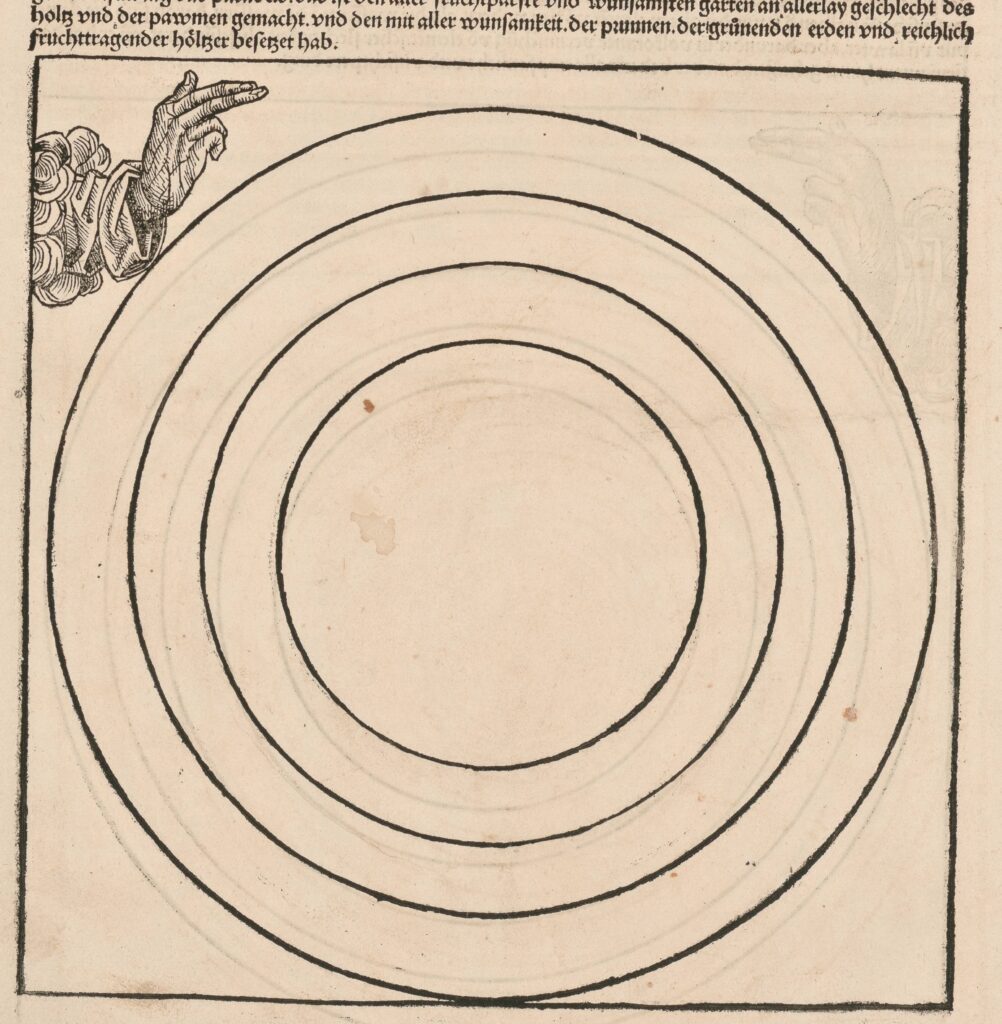
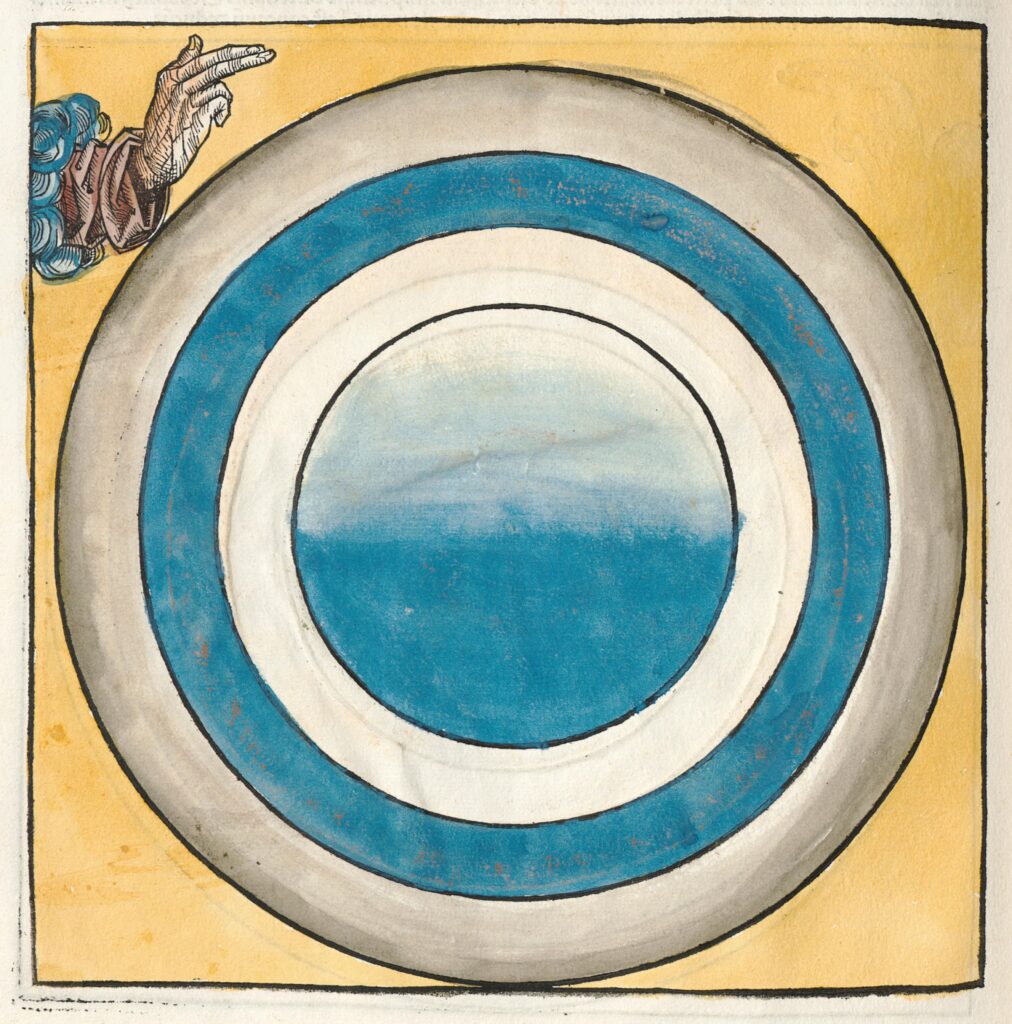
Other instances show how the designers of these illustrations mobilized the contrast of the black ink and white paper. Such is the case in the engravings in Jan Swammerdam’s Biblia naturae (1738) the densely hatched black ground functions twofold: first, it allows for heightened visibility of the microscopic material by offsetting the representation from the page, and second, it makes reference to the actual act of seeing through a microscope where the black background gestures towards the kind of preparation and the lighting that allowed for such observations to be made in the first place.
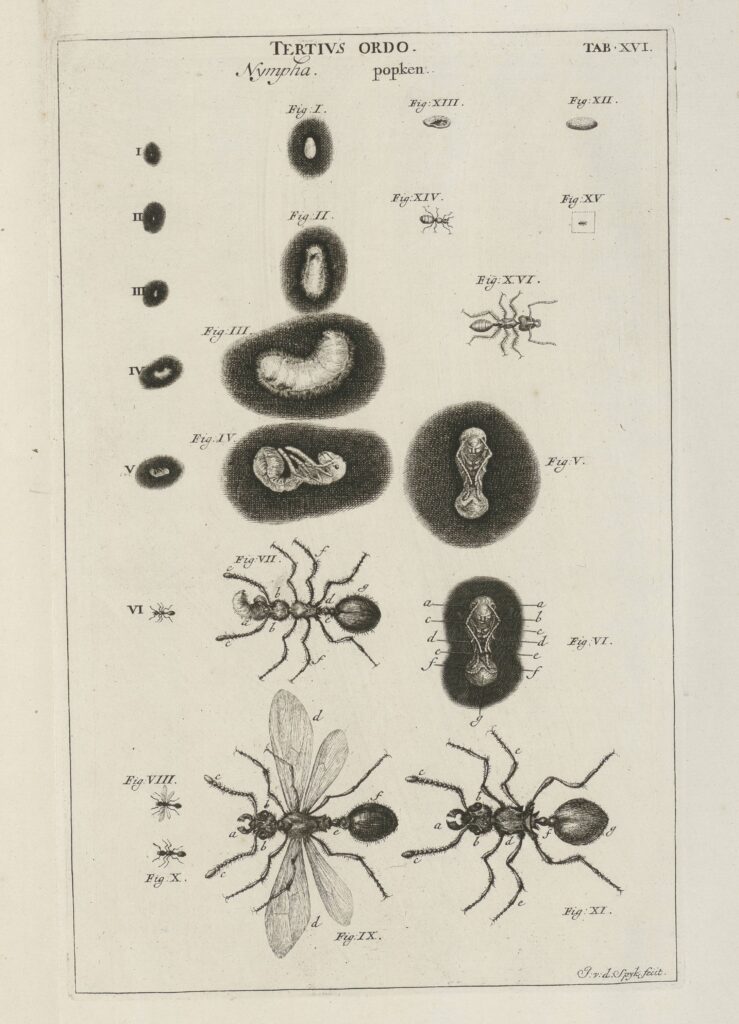
The printing press also served as a tool of standardization, working to streamline certain forms of scientific representation with the help of movable type. Musical notation was one such potential beneficiary. Metal type pieces were cast so that they could be set together on the page without needing to carve individual notes, rests, accidentals, sharps, and so forth. However, looking at an example in Athanasius Kircher’s Musurgia universalis from 1650 we see that the results could be a somewhat awkward cobbling together of the staves, which do not quite line up in the setting. And with individual type for each musical symbol, printers needed a large amount of metal pieces just for a bar of music, making music printing a large investment.
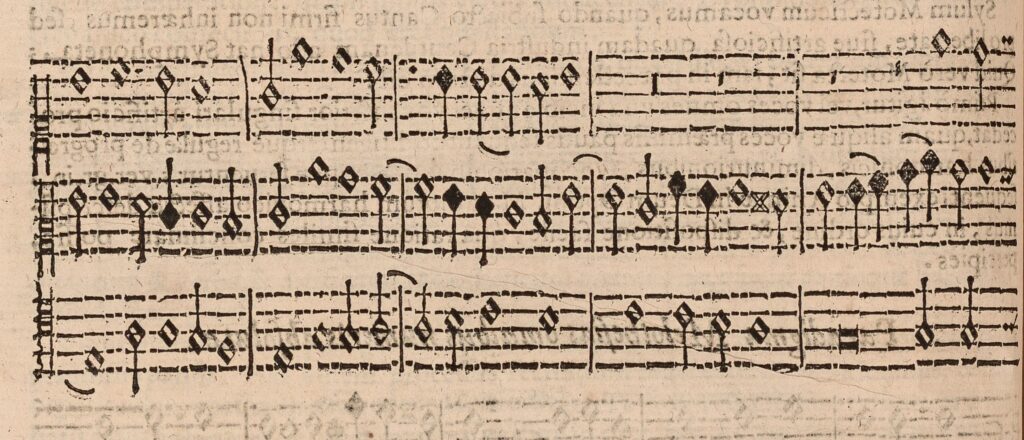
It was also difficult to reproduce all the details of handwritten music in moveable type and over the course of the early modern period more and more printers turned to the medium of engraving and developed specialized tools to punch notation more easily into the plate. Here engravers could space notes according to their length and come closer to the appearance of music in handwritten form. The difference between engraving and moveable type becomes evident in comparing the previous example with Kircher’s transcriptions of bird songs, printed in the same book and featured in this exhibition. By using the medium of engraving, Kircher could depict both the engraved images of birds and their musical notes on a single page. The use of both music type and engraving in the same book further demonstrate the coexistence of these different techniques with each medium more suitable for a different task.

The convenience of being able to print text and woodcut together with a screw press eventually gave way to a preference for more elaborate intaglio designs that had to be printed with a rolling press, which necessarily exerted greater pressure on the copper plate to ensure the ink adhered to the page. As such, images started to stand more insistently on their own and there developed a new need for legends on the page and in the texts that relied on systems of cross-referencing that allowed viewers to parse what had been set before their eyes.
Ultimately, print was appealing for its malleability and the expressive capacities of line. Authors and designers lavished in this flexibility in their rendering of different types of images that could sit comfortably together in a single publication and meet the myriad needs of the text. Take for example the two illustrations exhibited from Paul Hoste’s L’Art des Armées Navales which could not be more different. On the one hand there is a pictorial scene depicting a stormy seascape, representing the perils of seafaring and introducing the reader to the dangers that lie ahead. Powerful swirls of line are used to make the tempestuous sea while a flash of lighting once again relies on the bright white of the page to create a violent rupture that breaks open the sky. On the other hand, Hoste also included diagrammatic images, which were still, and practical to present a mathematical view of precisely how to best navigate such a storm and approach different kinds of waves to avoid a potentially disastrous outcome. Both image types served their purpose in the text, and allowed the reader to gain different understandings of what lay ahead out at sea and even work together to advertise the kind of advice that Hoste was able to offer to confront the danger of sea.
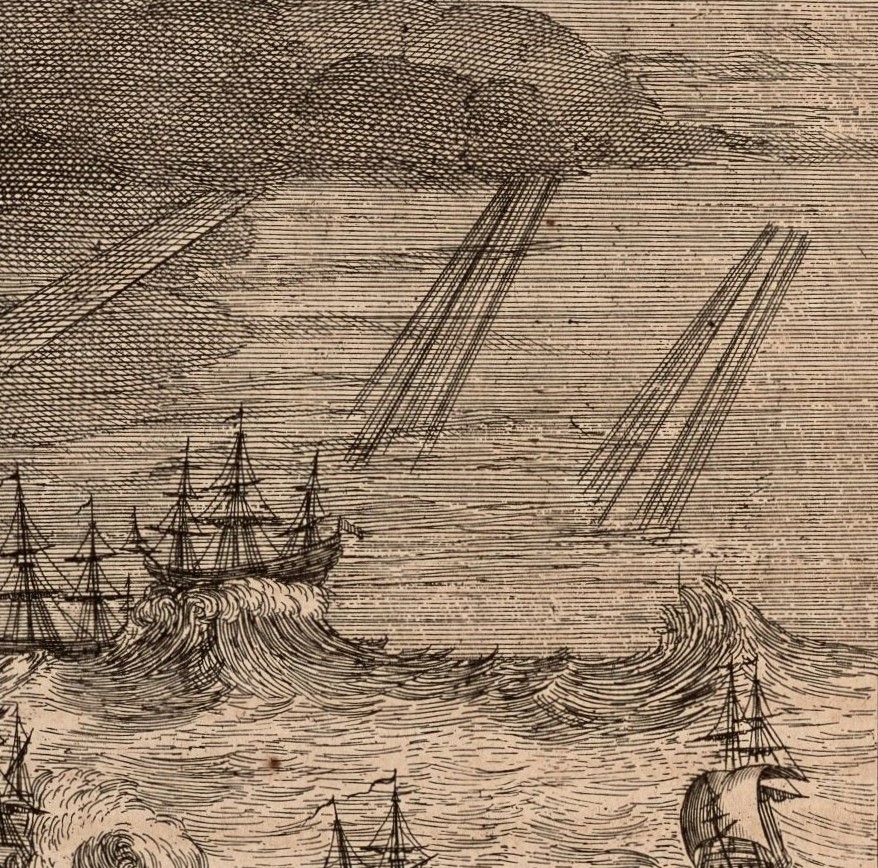
1697, 414
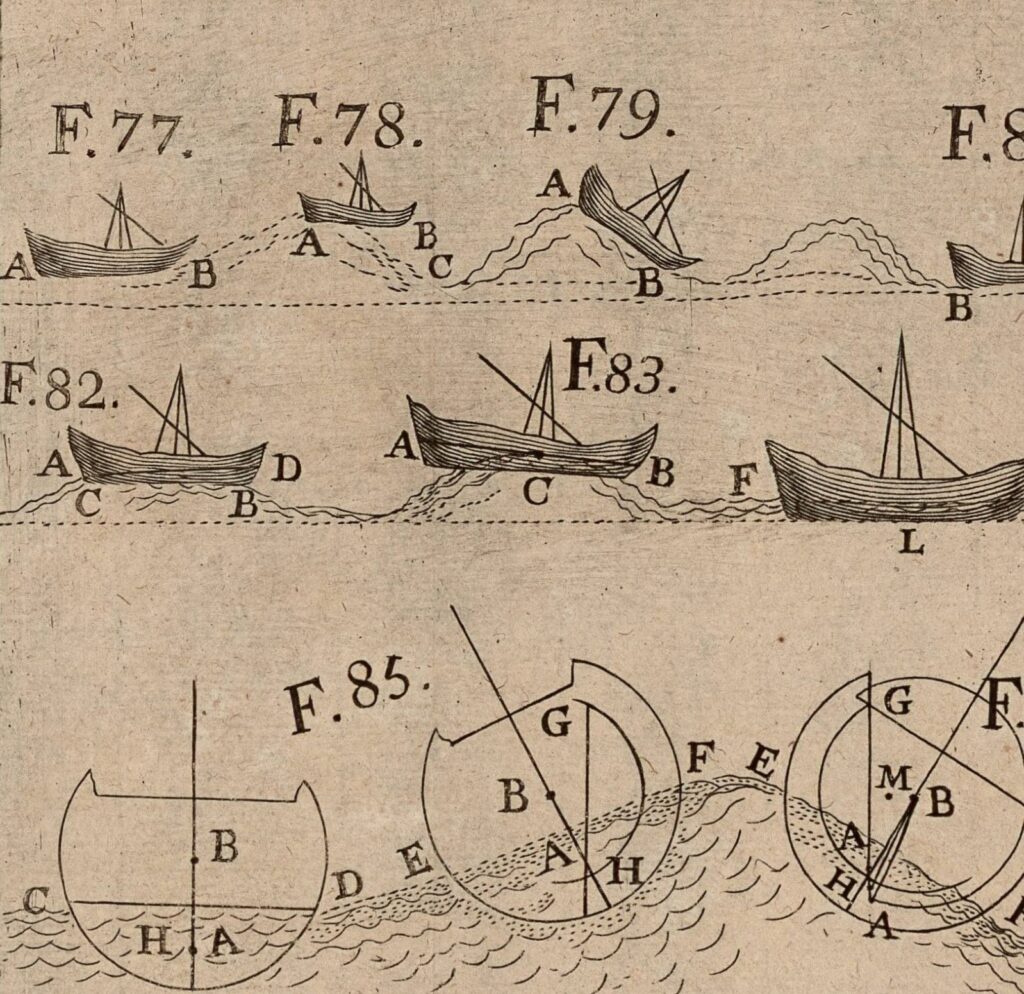
Sources:
- Hoste, Paule. L’Art Des Armées Navales, Ov Traité Des Evolutions Navales. Qui Contient Des Regles Utiles Aux Officiers Généraux, & Particuliers d’une Armée Navale. Lyon : Anisson and Posuel, 1697. Hm 7000-2970 raro VIII [Kubikat; Digitized Version]
- Kircher, Athanasius. Musurgia Universalis Sive Ars Magna Consoni Et Dissoni. Rome: Corbeletti/Grignani, 1650). Zs-KIR 1051-2500 raro VIII [Kubikat; Digitized Version]
- Schedel, Hartmann. Das buch der Cronicken vnd gedechtnus wirdigern geschichte[n] vo[n] anbegyn[n] d[er] werlt bis auf dise vnßere zeit … .Nuremberg: Koberger, 1493. Rr 5400-930 raro [Kubikat; Digitized Version]
- Swammerdam, Johannes. Biblia naturae, sive historia insectorum (Leiden: Severinus, Van der AA and Van der AA, 1738. BHR: Zx 620-3370/2 raro VIII [Kubikat; Digitized Version]
Further reading:
- Gaskell, Philip. A New Introduction to Bibliography. Oxford: Oxford University Press, 1972.
- Griffiths, Antony. Prints and Printmaking: An Introduction to the History and Techniques. London: British Museum Press, 1996.
- Lindmayr –Brandl, Andrea and Grantley McDonald, eds. Early Printed Music and Material Culture in Central and Western Europe. London: Routledge, 2021.
- Spira, Freyda, et al. “What is Printmaking.” The Metropolitan Museum of Art. Online available at: https://www.metmuseum.org/about-the-met/collection-areas/drawings-and- prints/materials-and-techniques/printmaking
- Werner, Sarah. Studying Early Printed Books, 1450–1800. Hoboken: Wiley Blackwell, 2019.